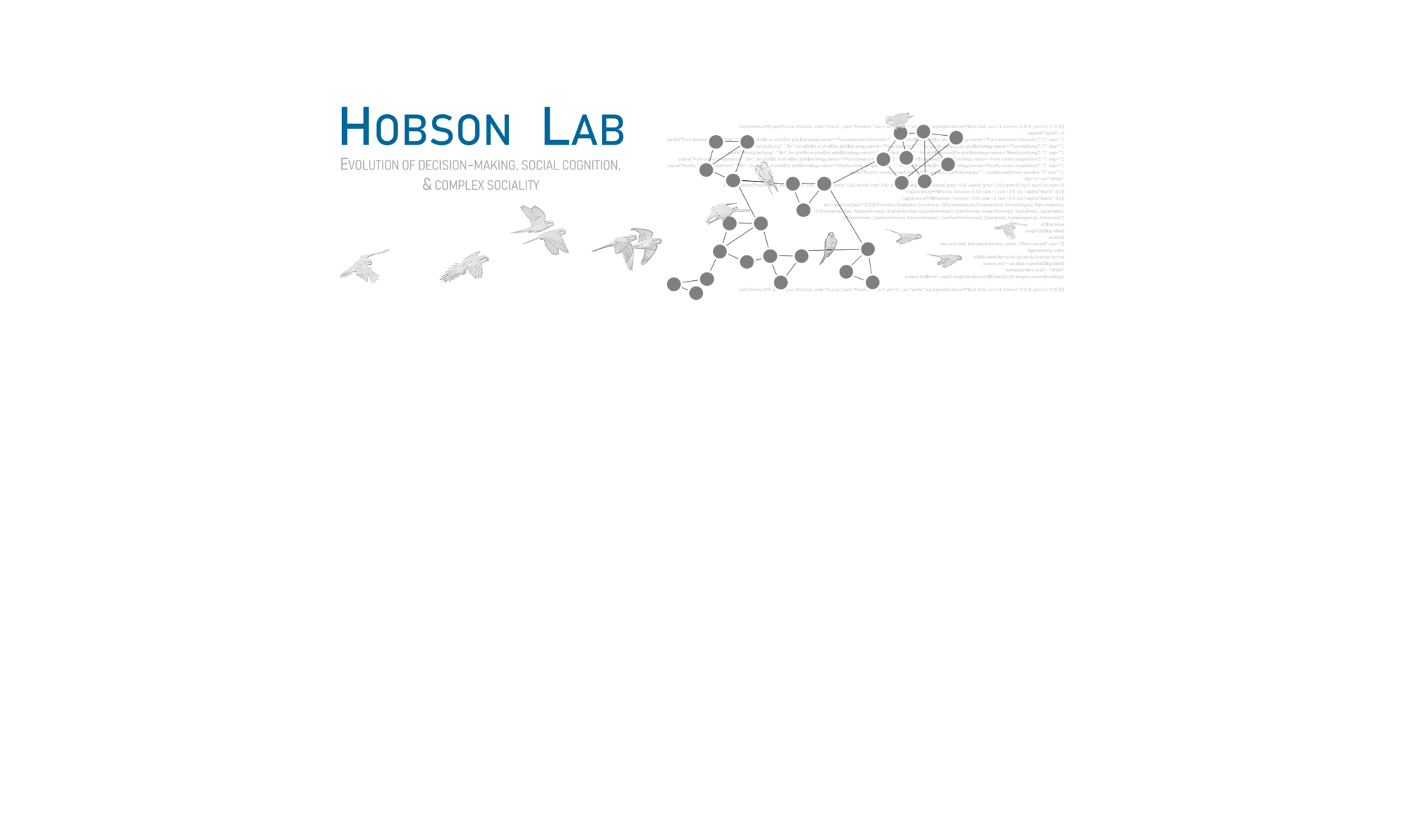My recent grant, with Simon DeDeo and Dan Mønster, was profiled in SFI’s Parallax newsletter.
From SFI’s Parallax:
SFI External Professor Simon DeDeo, ASU-SFI Fellow Elizabeth Hobson, and Dan Mønster (Aarhus University) recently received a grant from the Army Research Office to conduct social science research. Their project will look at how humans understand social interactions and form ideas about social structure.
Science writer Katherine Mast chatted with Hobson about the upcoming experiments and how this research into human behavior draws on her previous studies on the social lives of parakeets.
Tell us about the experiments you have planned through this grant.
We’re going to have undergrads play a networked computer game. They’ll compete for rank in a dominance hierarchy, and we won’t allow any kind of communication. Then we’re going to pay them for participating based on how high in rank they get.
Behind the scenes, we’re going to dial up the amount and the type of social information we give them — like how many past events to show them on the screen and more global emergent knowledge about which individuals are top ranked vs. bottom ranked — and see how that changes strategies and ability to gain rank in the hierarchy.
What are the backgrounds of this trio of researchers?
We’re an ex-cosmologist-turned-social scientist — that’s Simon, who is the lead investigator — and me, mostly coming from biology and behavioral ecology, and Dan, who’s an ex-physicist-turned-behavioral economist.
Most of your previous work has been with animals. What’s different about doing a human study?
Right now, I’m working with a big historical data set of how animals fight that goes back to 1934. The way that individuals are choosing to fight gives you a lot of insight into what they’re paying attention to and what kinds of information they are using to make their decisions.
There’s a lot of processing that goes on in the human mind that is probably very different from animal minds — complicated strategizing, trying to figure out what the experimenters want and trying to act on those expectations.
What results do you anticipate?
One of the strategies might be very basic: if you attack me in the game and I retaliate and attack you, we get stuck in an endless loop of retaliating against each other. That’s not going to help either of our ranks. Tying the individuals’ ranks to their payment could be a cue to break these unproductive strategies.
We might also see collusion or cooperation — attacking a common enemy — but in the total absence of any kind of communication.
What’s the connection to your prior work with parakeets?
A lot of the math that underlies these networked computer games is the same that Simon and I developed to work with parakeet data. With the parakeets, I observed them for about a month at a time. We’re not going to trap the undergrads for a month — we’re going to do it over a couple of hours. It will be interesting to see if similar types of strategies and social structures emerge to what we saw in the parakeets or if things are totally different when you start looking at humans and compressing the timescales.
As humans, we have arguably the most complex social structures of any species. It’s been a big mystery how we got to that level of social complexity. Previous research has focused on the connection between social and cognitive complexity. But we don’t know how hard it is to process social information. That’s one of the things that we hope to get at with this project: just how hard is it, and what happens as we tweak the amount and type of information that we’re allowing people to use.
NEWS MEDIA CONTACT
Jenna Marshall
Manager of Communications
marshall@santafe.edu
505-946-2798 (desk)





